-
Producer
-
Guillermo Juárez
-
Country
- Guatemala
-
Region
-
Santa Rosa
-
Altitude
-
1,450 - 1,850m above sea level
-
Variety
-
Process
-
Body
-
-
Acidity
-
-
Tasting notes
-
Valencia orange, yellow peach, boysenberry
-
Roast style
Guatemala
La Bugambilia
This Pacamara micro-lot is from a plot of land called La Bugambilia, one of five parcels of land on El Guatalón estate. The farm is located in the up-and-coming coffee region of Santa Rosa, Guatemala. La Bugambilia and El Guatalón are owned and managed by third-generation farmer Guillermo Juarez and his son Willy.
The La Bugambillia plot is 40-hectares in size – 18 of which are dedicated to coffee, with the remainder reserved for native forest. It sits at an elevation of 1,450 – 1,850m above sea level and is named after the Bougainvillea plant which is very common in Guatemala and has vibrant pink and purple flowers. Pacas, Caturra, Pacamara, Bourbon Amarillo and Geisha are all grown on this estate. This lot is 100% Pacamara – a variety that thrives on this plot and often places in the Cup of Excellence competition.
Our latest VS feature is a microlot of 100% Pacamara, a varietal that usually takes the top positions at the Cup of Excellence competitions. It’s not a coincidence that this is the goal of its producers, Guillermo and Willy.
VERY SPECIAL
This is the first time we’re featuring the Guatemalan origin and the Pacamara varietal on Brew Crew VS, and once you brew it, you’ll know why. Its clean, tropical, and floral qualities come from the combination of this varietal’s genetics plus the passion and professionalism of a coffee-producing family with more than a century’s worth of knowledge.
We’re lucky to share a part of a tiny microlot bought entirely by Melbourne Coffee Merchants—an Australian green coffee importer that joined us in becoming B Corporation certified. Congrats!
LA FAMILIA
The estate was first established in 1910 by Daniel Juarez, who planted it with Typica and Mundo Novo varieties, and was the first commercial coffee plantation in the region. Daniel’s son, Juan Alberto, took over the farm in the 1970s, focusing on growing the estate’s commercial operations and expanding its land. In 2010, Juan Alberto handed the business to his son Guillermo; today, he looks after the agronomy together with his own son, Willy (the 4rth generation!), who manages de process operations at the wet and dry mills.
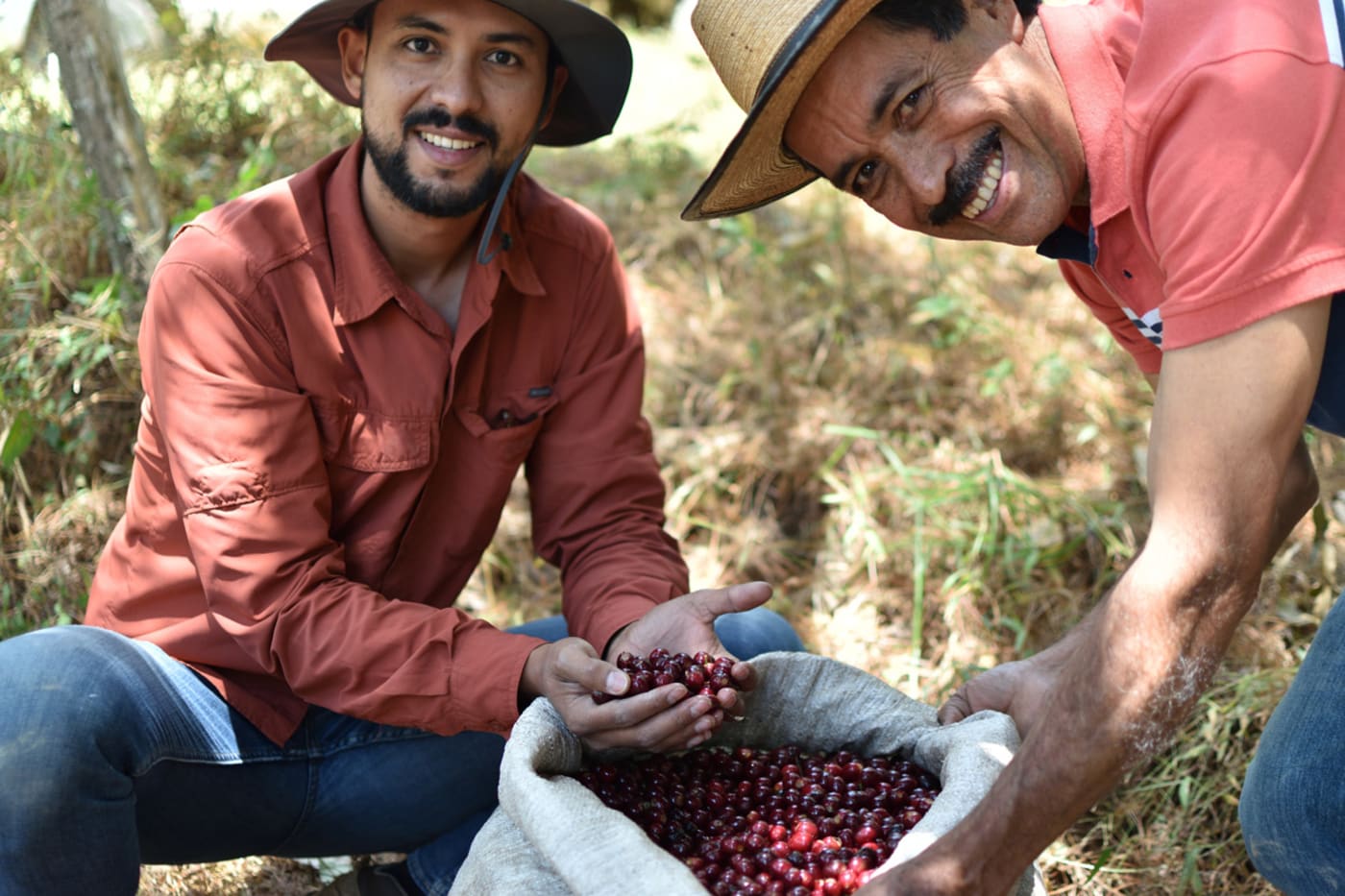
Guillermo (pictured right) worked as an agronomist for many years, and today works on the farm with his son, Willy (pictured left).
LA BUGAMBILIA AND EL GUATALÓN ESTATE
El Guatalón estate is divided by altitude and soil type into 5 parcels of land: La Bugambilia, El Cuje, Los Pajuiles, and Guatalón (all these in the municipality of Santa Rosa de Lima) and La Loma (located in the neighbouring Mataquescuintla). Each generation has introduced new varieties, including Typica, Mundo Novo, Pache, San Ramon, Caturra, Catuaí and most recently Villa Sarchi, Pacamara and Maragogype. These varieties flourish in different microclimates, which they are lucky to access thanks to the varied characteristics of every parcel.
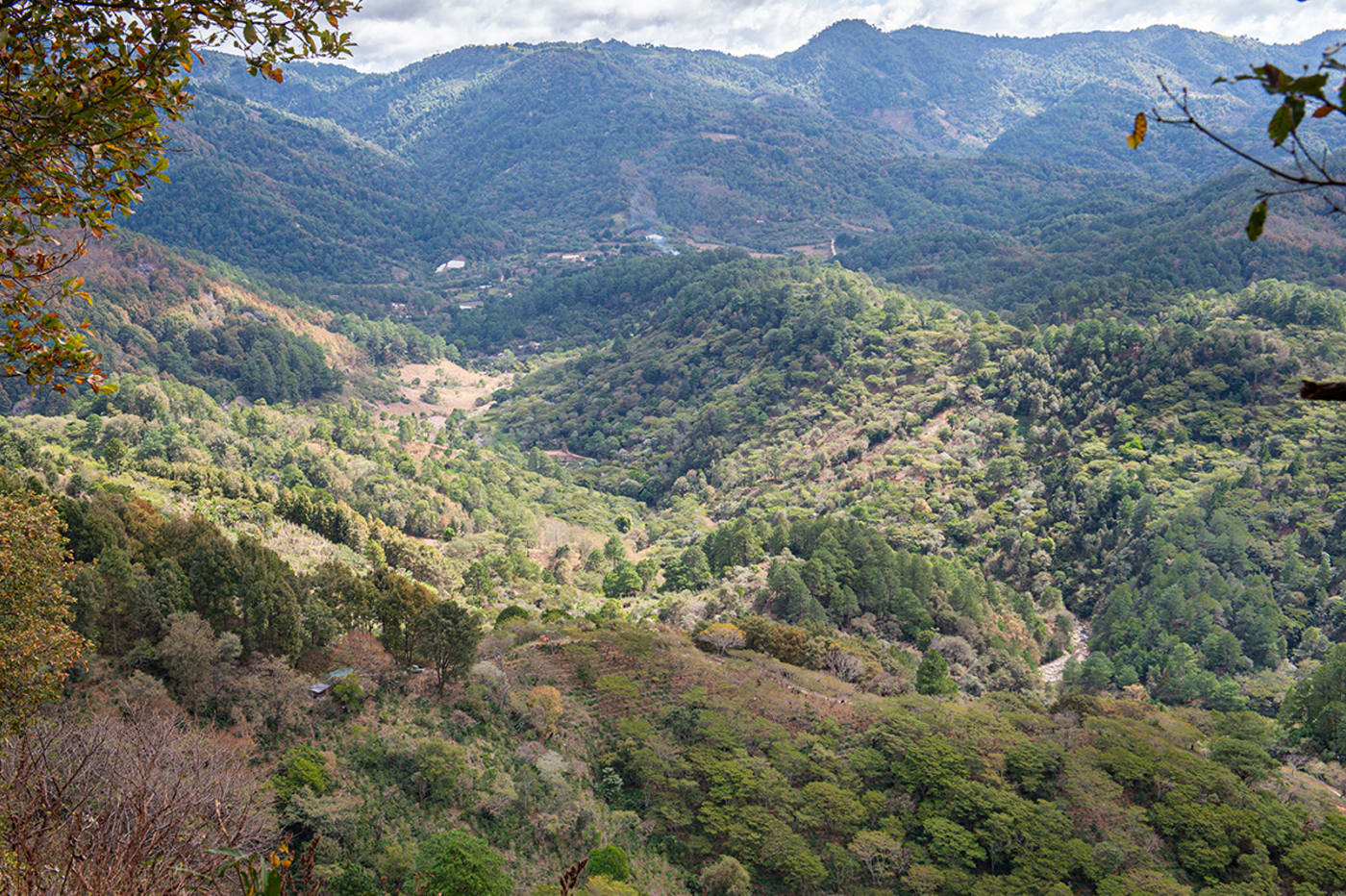
Santa Rosa’s unique topography, with a range of microclimates, offers great potential for specialty coffee production
La Bugambillia is a 40-hectare plot that sits at an elevation of 1,450-1,850m above sea level. It is named after the Bougainvillea plant, which is very common in Guatemala and has vibrant pink and purple flowers.
Only 18 hectares grow coffee trees, specifically the Pacas, Caturra, Bourbon Amarillo, Geisha and Pacamara varietals. Native trees like oak, cedar, Garvilea and Cuje—generally taller and with a larger canopy—occupy the rest of the land, protecting the coffee trees from direct sunlight and harsh winds and contributing to preserving the local flora and fauna. (This is what we know as shade-grown coffee.)
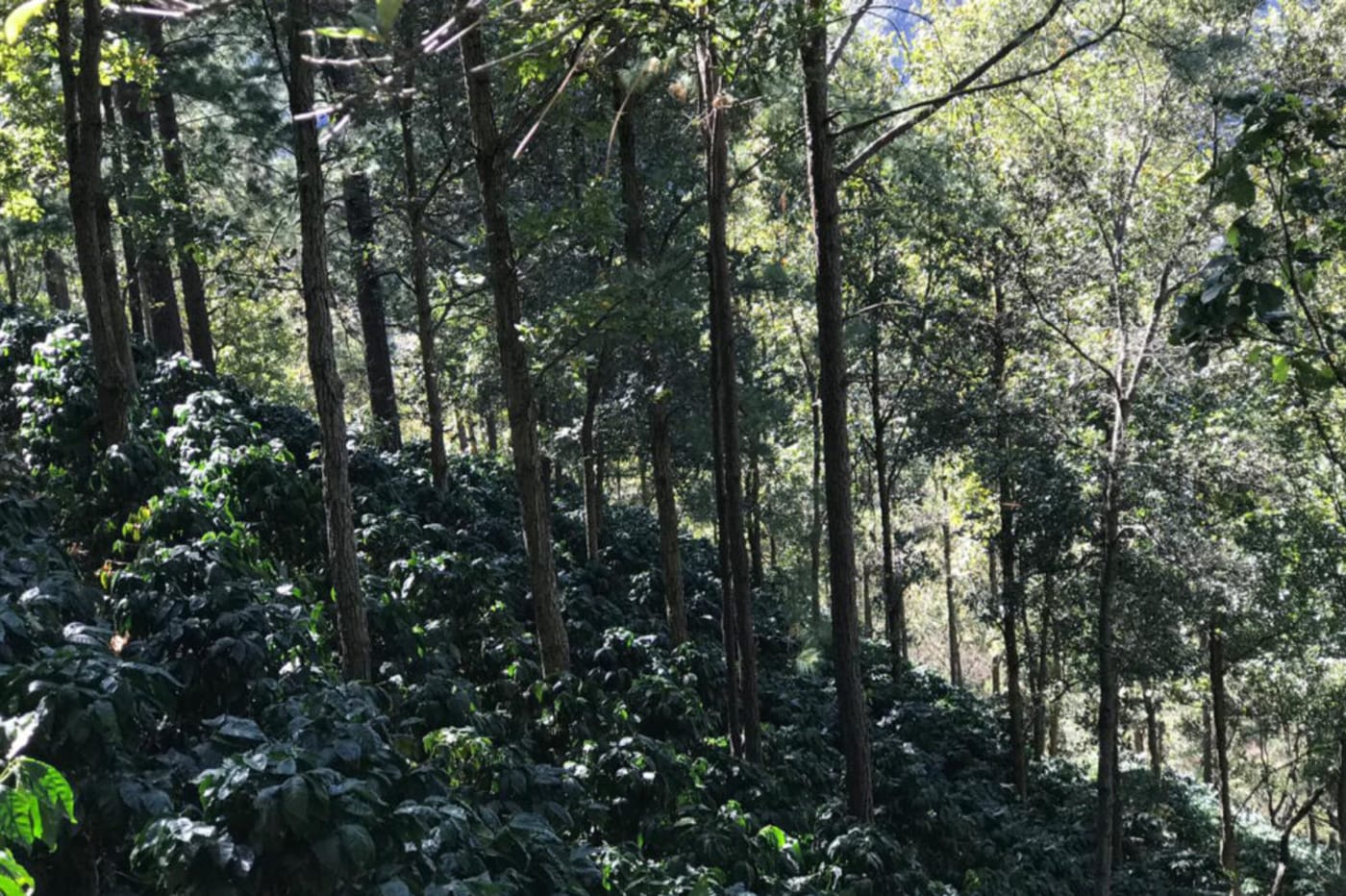
The shade at work at Guatalón state
PACAMARA = EXCELLENT
This lot is 100% Pacamara, a variety that thrives on the La Bugambillia plot and produces extremely high-quality cupping coffees. Originating from a cross between Pacas and Maragogipe, it is grown primarily in El Salvador, where it frequently dominates the Cup of Excellence—a competition the producer knows well.
When Guillermo took over the estate, he shifted toward specialty coffee production (more premiums, financial sustainability, better living). At some point, he heard about the Cup of Excellence and decided to participate. In 2012 they came very close to qualifying (finishing 24th and just outside the final lineup of 23 farms), and only a couple of years later, in 2014, they were thrilled to receive their first accolade. Since then, the farm has been awarded nearly every year, most recently in 2022, when two lots placed 17th and 11th.
The awards and recognition are very motivating for Guillermo, who loves a challenge: “We want to go further. We know we can deliver higher quality. After all, we know living and succeeding is just about that: always make an extra effort.”
MIGHTY WASHED PROCESS
Harvest begins in December and concludes in March.
The handpicked and ripe beans are processed at the family’s wet mill in Samororo (located close to the La Loma plot). After being depulped, they ferment for 24-40 hours and then washed to remove any remaining pulp. The last stage is to dry on patios, where the beans are turned regularly to ensure they dry slowly and evenly. Once dry, the coffee is rested in the parchment until it is ready for export.
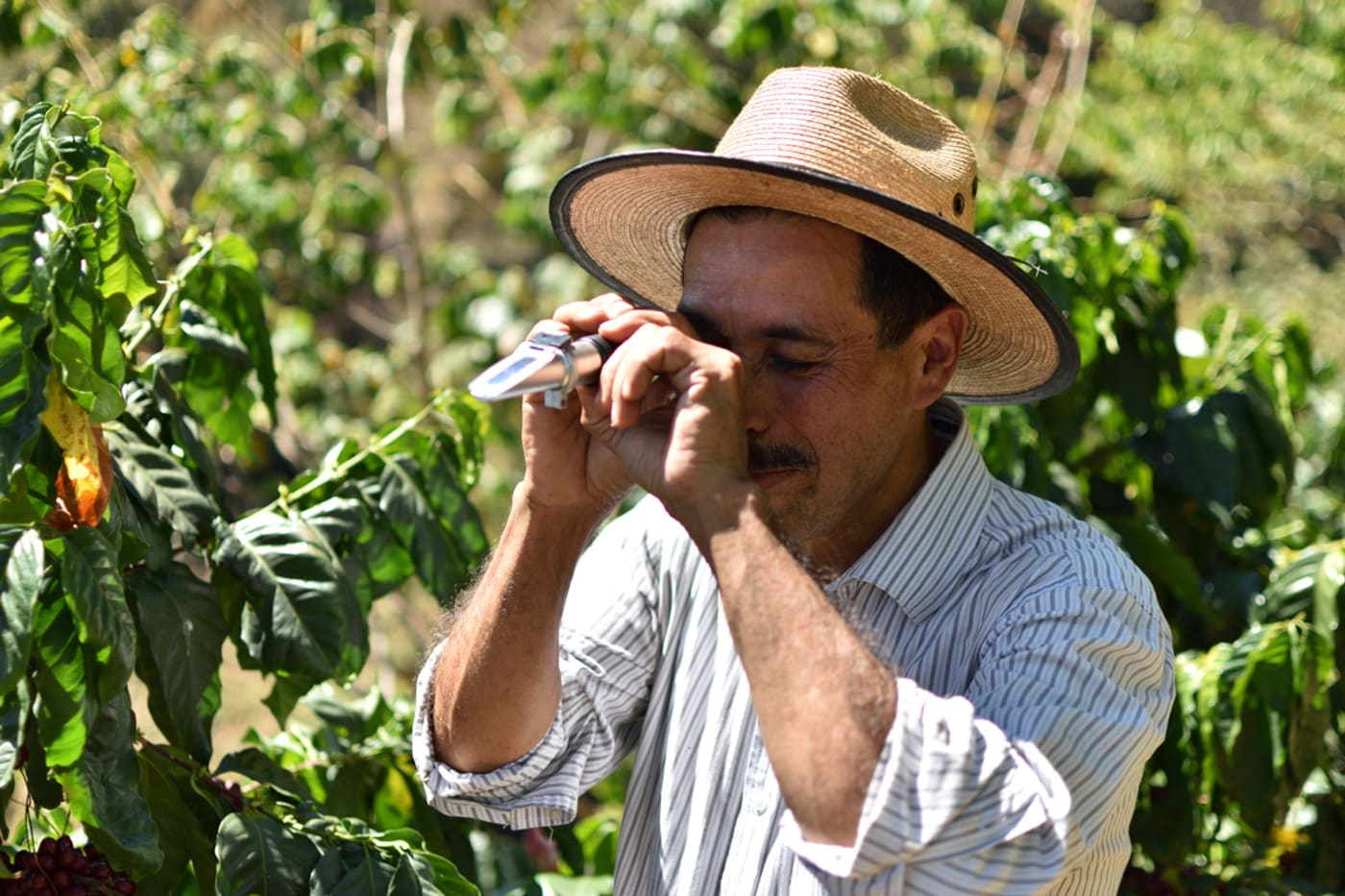
Checking the quality from step 1: cherrypicking
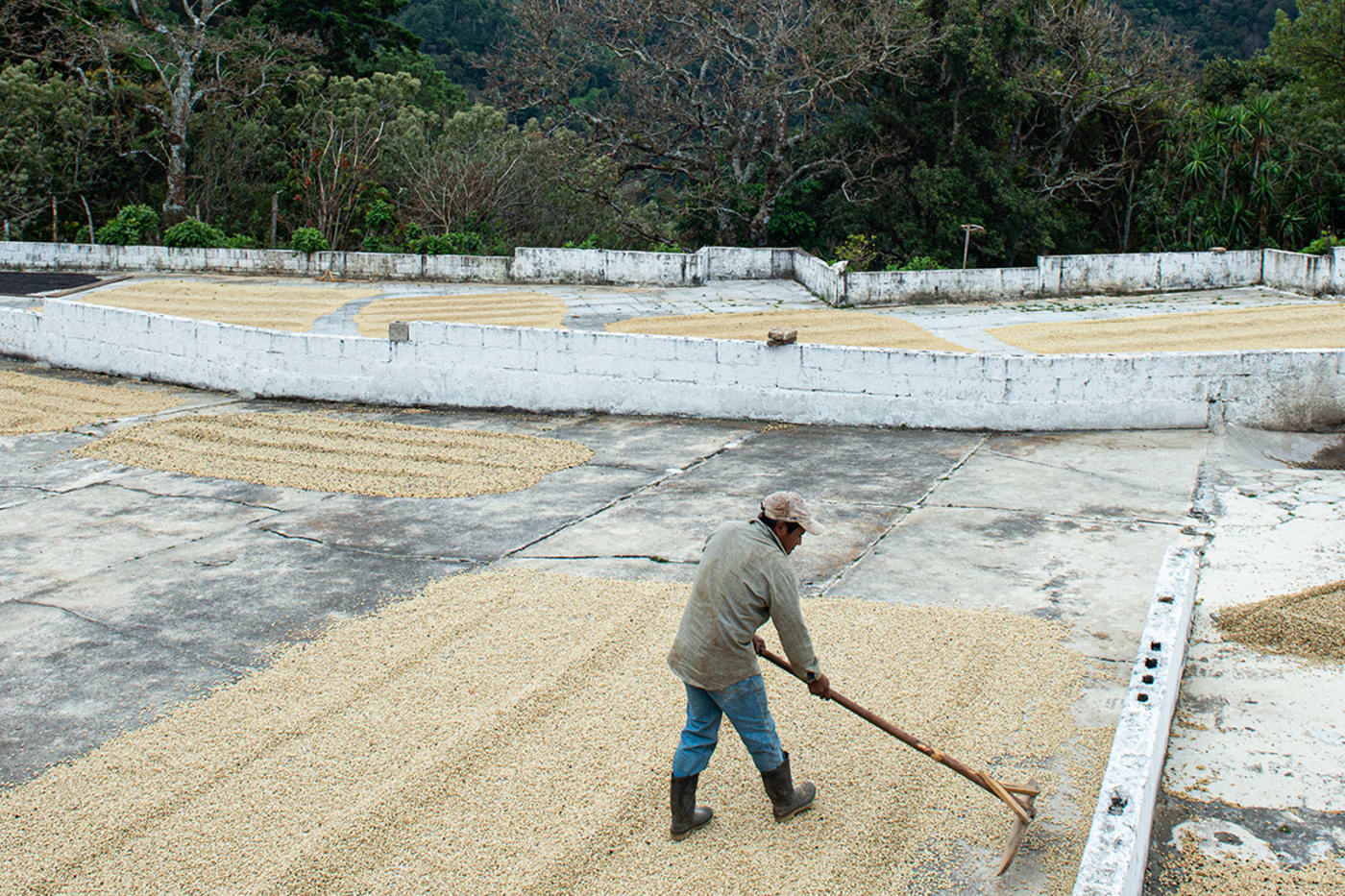
The drying patios at Samororo
BREW, SHARE AND ENJOY
Try the team’s recipe (see below) or find your best method (and let us know how it went!). If you have any questions or need other tips to get started, please say reach out anytime at [email protected] or via @samplecoffee.
All images and information about this coffee and producers have been kindly shared by its importer, Melbourne Coffee Merchants, and edited by us, Sample Coffee (unless linked to or credited otherwise). Learn more here.
Learn everything about this coffee:
Ethical, traceable sourcing
This page has all the sourcing information (variety, process, region, story, importer, and more) that our importers share with us, and give us permission to use.
The transparency helps us talk confidently about the quality and background of our product, and it helps you know exactly what you’re buying.
Learn more:
Coffee page transparency legend
Our coffee philosophy
Our business approach
Fresh harvest coffee
We only source and roast coffee from each country’s latest harvest season (so the green coffee is never older than 1 year from the time of picking, processing and packing). This ensures the sensory qualities are always at their peak and unaffected by excessive ageing.
Roasted for espresso and filter (best enjoyed black)
Roast style: omni. Omni roasts are designed to brew and taste great both as espresso and filter. Our omni single origins generally sit on Agtron values in the ~70-60 value range. So, technically, they are somewhere in the lighter side of the medium spectrum.
Designed for espresso and filter brewing. Best enjoyed black.
Learn more:
Our Loring Kestrel S35 roaster
Our roasting style and approach
Best brewed within days 15-49 post-roast
The ‘fresh is best’ saying doesn’t apply to coffee (contrary to popular belief). Waiting before opening and brewing your bag of whole coffee beans helps develop peak flavour and acidity.
But heads up: if you buy pre-ground coffee, brew it as soon as possible.
Learn more:
Our recommended brewing window
Try our custom brewing recipes
Our recipes and ratios are tailored to our coffee sourcing and roasting styles, bringing the best flavour and feel out of each coffee.
For pour over, immersion, and other filter brewing styles, check our brew guides.
For our espresso single origins, we recommend a coffee:yield ratio of 1:3:
- Dose: 20g ground coffee
- Yield: 60g espresso
- Total brew time: ~24-28 seconds
This is just a starting point! We encourage you to experiment, taste, and adjust to find the recipe that you enjoy the most.
Learn more:
Our espresso brew guide (single origin)
Brewing ratio calculator
Packaging and sustainability
- Bags: ABA-certified home compostable (AS 5810-2010)
- Labels: recyclable
- Valves (only on +250g bags): general waste
- Box and tape (online orders): recyclable
Learn more:
Our packaging
Variety
Pacamara variety
A cross-breed between Pacas and Maragogype, developed in El Salvador in 1958
The location
Coffee from Guatemala
Guatemala’s production of coffee first grew in the 1860s on the back of a declining indigo trade, which had previously existed as it’s main export. Up until 2011 Guatemala was in the top 5 highest producing coffees nations in the world, before being overtaken by Honduras.
Farm processes
Washed process
Machines are used to remove the flesh from the coffee cherry before being fermented in water, washed again, and finally sun dried. This process tends to result in more distinct, cleaner flavours.
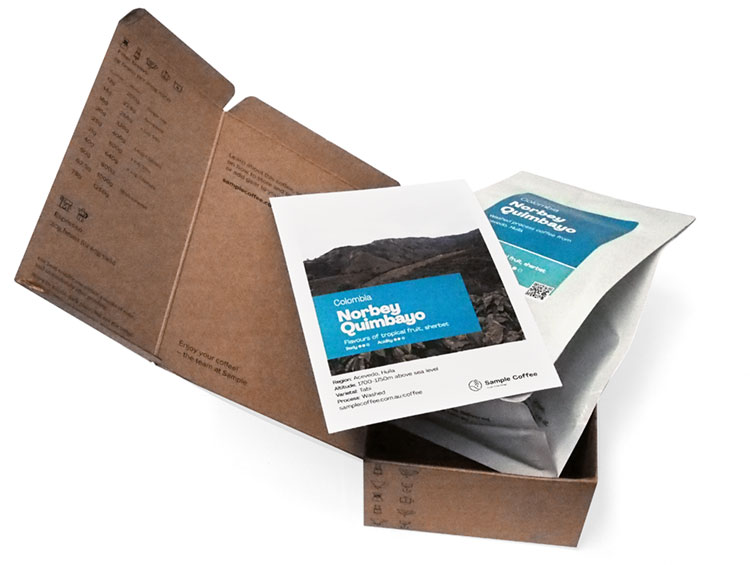
Subscribe to a world of coffee
Discover a new single origin coffee from Sample every 1-5 weeks with no delivery fees.
No up-front purchase, and you can pause, cancel, or change plans at any time.
Available to order online this week:
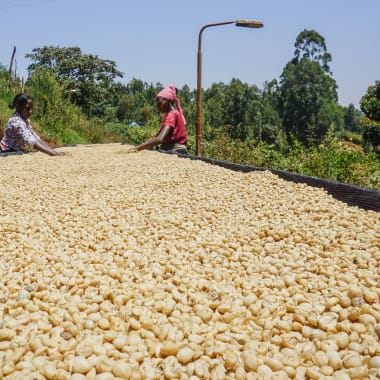
Kenya Karindundu Aa
Flavours of orange marmalade, grapefruit, Yunnan red tea
Body Acidity
Washed Batian, SL28, SL34, Ruiru 11
Roasted omni for filter and espresso
Kenya Karindundu Aa online
Nicaragua Guillermo Montenegro
Flavours of plum, nectarine, shortbread
Body Acidity
Washed Caturra
March 2025 harvest
Roasted omni for filter and espresso
Nicaragua Guillermo Montenegro online
Ethiopia Girma Sintayehu Honey
Flavours of apricot, mango, coconut, pineapple
Body Acidity
Honey 75227, Wolisho
February 2025 harvest
Roasted omni for filter and espresso
Ethiopia Girma Sintayehu Honey online
Ethiopia Bekele Gemeda
Flavours of mandarin, white peach, mango
Body Acidity
Washed Ethiopian Heirloom
November 2024 harvest
Roasted omni for filter and espresso
Ethiopia Bekele Gemeda online